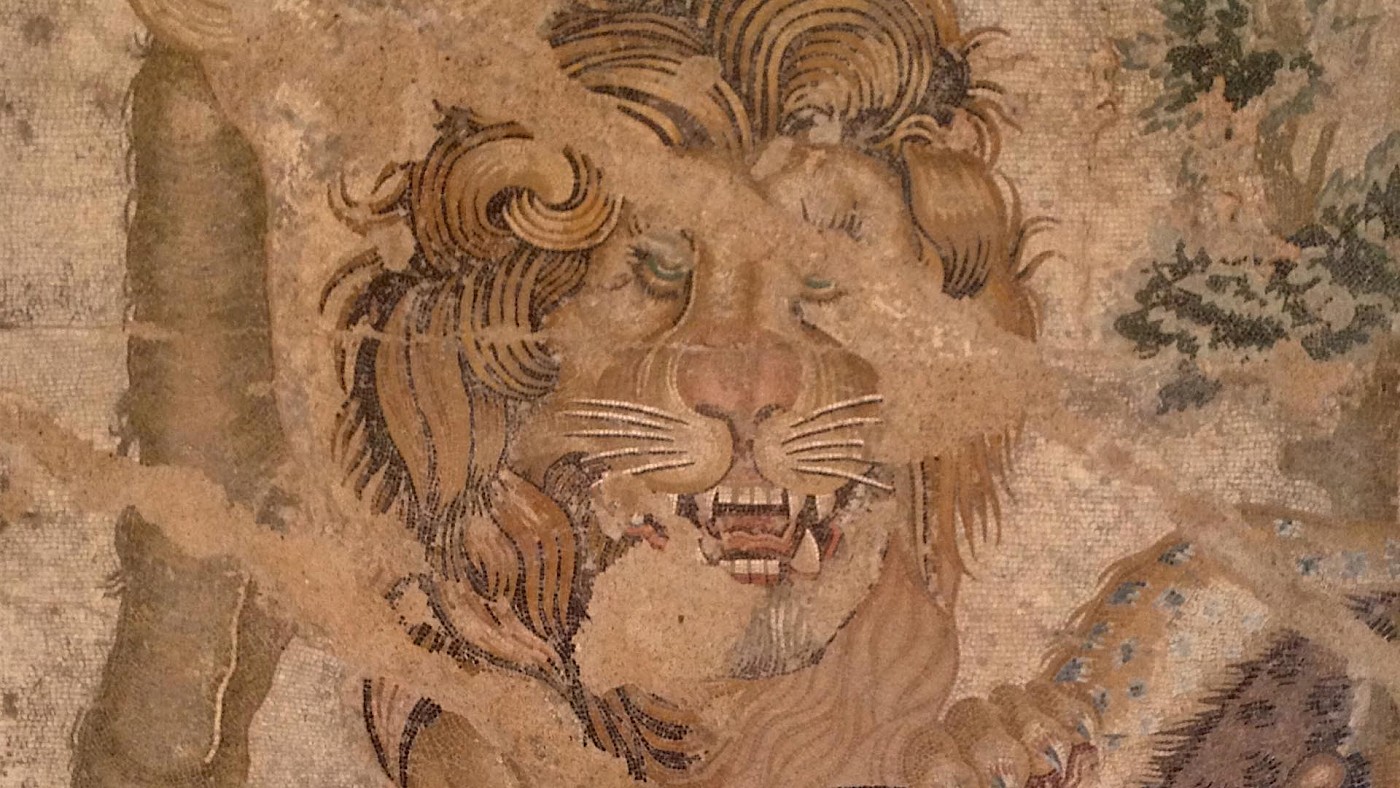When Vesuvius erupted in AD 79, it covered Pompeii and several other Roman towns in a thick layer of ash, preserving large parts of them for posterity. Among the many things recovered from these sites are numerous mosaics, many of which are on display at the National Archaeological Museum of Naples.
The mosaics feature various types of scenes. I’ve written before, for example, about a mosaic that depicts street musicians. Another famous mosaic depicts Alexander the Great and his opponent, Darius III. But there are also many mosaics that feature landscapes, plants, and animals.
A particularly striking mosaic depicts a lion that either has defeated, or is in the process of defeating, a leopard (inv. no. 114282). The animals are rendered realistically using hundreds if not thousands of tiny tesserae (tiles). The lion itself, with its wild manes, looks directly at the viewer; its raised back and strong paws communicate clearly that it’s not to be trifled with.
In contrast, the leopard is shown in an entirely submissive position, pinned to the ground by the lion, looking fearfully up at his opponent. The artists must have studied these big cats in detail, as the ears are also drawn back. Blood gushes from the wound in its side, and if you look above the leopard’s left paw (in the foreground), you’ll see that some blood appears to be pooling there. The end is no doubt nigh for this poor creature.
The leopard’s pathetic aspect seems to be further emphasized by the fact that its genitals are clearly visible. To an educated and well-read Roman, they may have conjured up images from ancient Greek poetry, such as a poem by Tyrtaeus in which the death of an old man in battle is lamented, as he falls in the dust, “clutching his bloodied genitals” (Tyrt. fr. 10.19). (You might be interested in reading my earlier article about naked men in ancient Greek art, and decide for yourself if considerations regarding “pathetic nudity” (to emphasize vulnerability) might also apply to scenes featuring animals.)
Despite the presence of vegetation in this scene, it seems likely that whoever designed, made, or commissioned this mosaic had observed these animals not in their natural habitat, but in the arena of Pompeii’s amphitheatre. Animals were sometimes forced to fight each other, after having been starved and tormented to increase their aggression. At other times, animals were part of “hunts” or pitted against gladiators or criminals condemned to die (damnatio ad bestias).
The Roman thirst for spectacular fights in the arena meant that huge animals were hauled in from all over the empire. According to Cassius Dio, the Emperor Titus organized battles in the Colosseum that featured thousands of animals (66.25):
There was a battle between cranes and also between four elephants; animals both tame and wild were slain to the number of nine thousand; and women (not those of any prominence, however) took part in despatching them.
This particular mosaic once decorated the floor of a room of the Casa delle Colombe a mosaico (VIII.2.34; the house is named after another mosaic that featured pigeons gathering around a water bowl). Perhaps it was meant to suggest that the master of the house was a fierce as a lion, and would take no prisoners when forced into a difficult situation.

